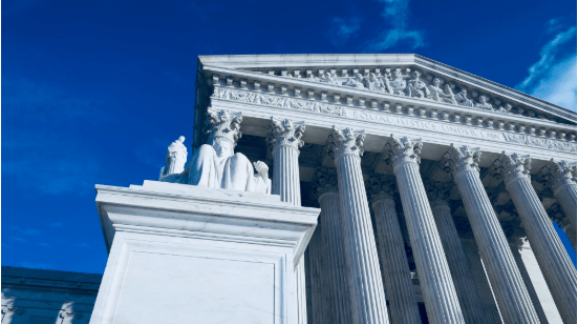Fill the Supreme Court Vacancy Now
History shows why it must be filled by this president and this Senate.
No party that controls both the White House and the Senate going into a general election would ever defer a Supreme Court vacancy to the next president and Congress. The Democrats’ demands that Republicans do so now, under the familiar threat of packing the Court and essentially blowing it up, is simply ridiculous. Republicans should be laughing it out of hand, which is exactly what Democrats would do if the situation were reversed.
Any rational adult should be able to see that this situation is totally different from the situation facing Obama in 2016. That is because, in 2016, the Senate and the White House were controlled by opposing parties (the Senate was in Republican hands, and the White House was in Democratic hands). Historically, when a president has nominated a Supreme Court justice while the Senate has been controlled by the opposing party, the results (more on these below) have not turned out well for the president’s party. Given the rocky history of such nominations, the “McConnell rule” — holding that, when the presidency and the Senate are controlled by opposing parties, vacancies in a presidential election year should not be filled before Election Day — made eminent sense in 2016. Unless the president is willing to offer up a nominee that the opposition party would be delighted to confirm, it’s better to wait until after the next election.
Democrats are having trouble understanding this because, unlike Republicans, they have almost never had to face the situation that Obama faced in 2016. Bill Clinton was the first Democratic president to face a Senate controlled by Republicans since Harry Truman. But neither Clinton nor Truman had a vacancy open up during their periods of “cohabitation” with a Republican-controlled Senate.
Before Barack Obama, the last Democratic president who had a Supreme Court vacancy open up during a Republican-controlled Senate was Grover Cleveland, who nominated the northern Democrat Melville Fuller to the Court in 1888, sparking a fierce confirmation battle. Barack Obama was thus the first Democratic president in 128 years to have to bother with a Republican-controlled Senate during a Supreme Court vacancy. The main reason is that Democrats have controlled the Senate the vast majority of the time since Franklin D. Roosevelt’s election in 1932.
Republican presidents, on the other hand, have had to contend with Democratically controlled Senates to fill many Supreme Court vacancies. Just looking back to the Nixon administration, we see that Republicans have made no less than eleven nominations to the Supreme Court in the face of a Democratically controlled Senate. It has been a rocky road, full of disappointments for the president, the GOP, and quite often the nominee.
Read the full article at National Review.
